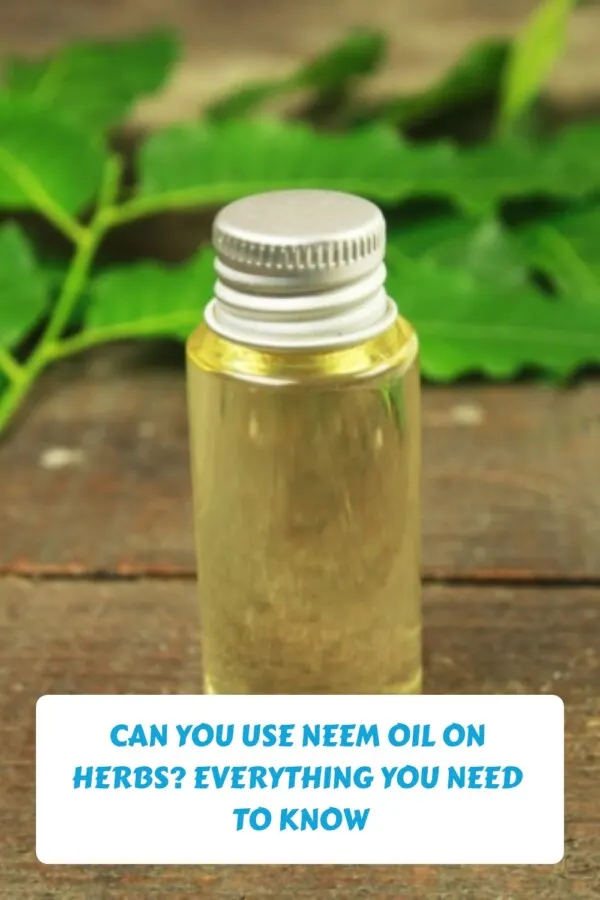Neem oil is an excellent thing to learn about if you’re looking for a non-toxic alternative to traditional pesticides. With neem oil, vegetables, fruits, and young plants can benefit from this low-toxicity alternative.
It is an effective insecticide that can eliminate and deter many pests and fungal diseases, such as spider mites, aphids, scale, mealybugs, blight, and leaf spots. This makes it a good choice for people who like caring for different plants.
But is neem oil safe for humans, herbs, and leafy greens?
What is Neem Oil?
Neem oil is a naturally occurring insecticide made from neem tree seeds. While it’s very low in toxicity, it smells and tastes pretty nasty and is yellow to brown.
Since the Middle Ages, it has been used to eliminate crop diseases and pests. Today, horticultural neem oil is typically made up of many ingredients. The most effective insect deterrent and killer in most commercial neem oils is Azadirachtin, derived from neem oil.
How Does Neem Oil Work?
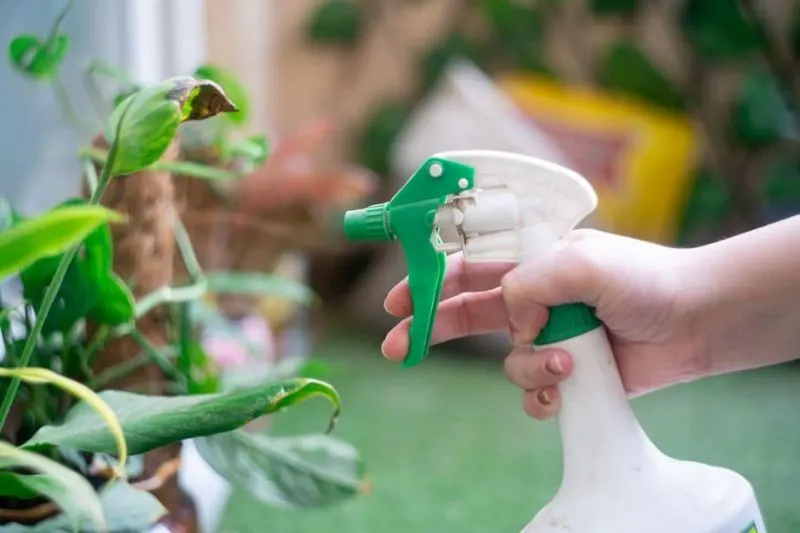
Neem oil can be used in two different ways. The first way is to eliminate insects on your plants by suffocating or smothering them. This only works on small bugs like spider mites and aphids.
The second is that neem oil contains compounds that also serve to destroy any nearby insects. Large and little bugs on your plants will be eliminated, even if they don’t suffocate.
Azadirachtin works as a poison when ingested by bugs. After eating azadirachtin-covered plants, bugs stop moving and eventually die. It is harmless to humans and a more natural way to keep plants safe.
Keep in mind that you won’t see the benefits of neem oil right away. It takes a few sessions and days before you start to feel the effects you want. Usually, it takes between three and four days.
If you regularly use neem oil in your houseplants, most pests won’t be a problem. You can clean your plants with Herbs4Sure Cold Pressed Edible Oil, and if you have a problem with flies, you can even spray it on your soil.
Can You Use Neem Oil on Herbs?
Is it safe to use neem oil on herbs and food plants? Yes! But is neem oil edible? While you can consume plants treated with neem oil, it’s not something you want to fry chicken in!
Made from natural oil from the neem tree, it doesn’t hurt many other plants. It’s easy to spray on fruits, vegetables, and even houseplants. You can spray the oil on most herbs and other plants that people eat.
The only problem is that you might get an uncomfortable tummy eating plants freshly sprayed with neem seed oil. You shouldn’t spray the foods you plan to eat the next day. Be sure to wash any plants or herbs that you can eat before you do.
There are a huge amount of plants that can benefit from neem oil – but some plants are weaker than others and may not be able to handle the oil. Some leafy greens and delicate-leafed herbs are particularly sensitive to neem seed oil.
You must spray a small part of the plant to ensure the herb can handle the oil after it has been applied. Neem oil is poisonous to pests – but bees, birds, and butterflies aren’t affected. So, you can spray Neem oil on food plants and herbs that need to be pollinated without worrying about killing the pollinators.
See Related: How to Grow Vegetables Year Round in a Greenhouse
Can You Use Neem Oil on Vegetables?
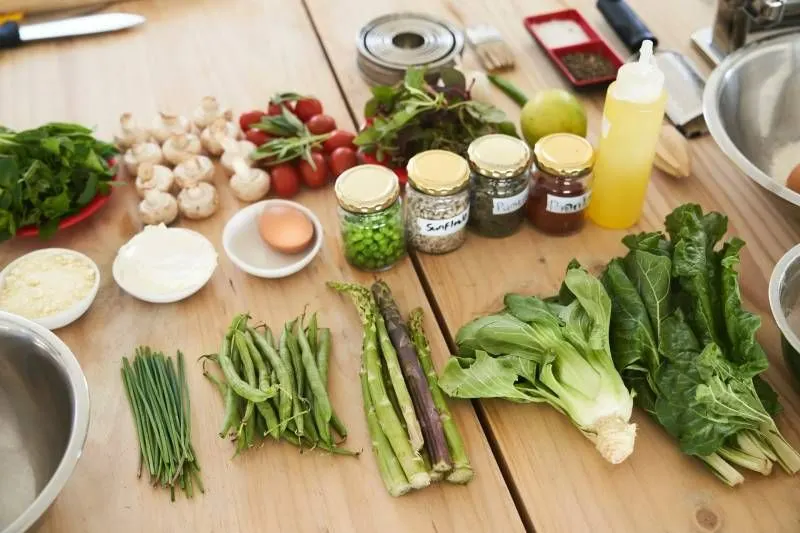
Neem oil is an essential oil made from the seeds of the neem tree. Hydrophobic neem oil is an all-natural alternative to chemical pesticides.
It is often used to get rid of pests in vegetable and edible plants, but the question is; Is neem oil safe for vegetables? Well, yes, neem oil vegetables are edible.
When Should Neem Oil Be Used?
Neem oil should be sprayed on the plant’s leaves in the morning or evening when the target bugs are asleep and not feeding or pollinating the plant. It is best not to use the spray in the middle of the day when the sun and heat are most likely to hurt the plants or smother beneficial insects that have been sprayed.
Neem oil can be used at any time during the planting season. On the other hand, most pesticides can only be used during certain times. Neem oil can be used at any time of the season with good results because it works on insects at every stage of their growth.
See Related: Best Wooden Greenhouses: Top Ideas You Should Try
Is There a Plant You Can’t Use Neem Oil On?
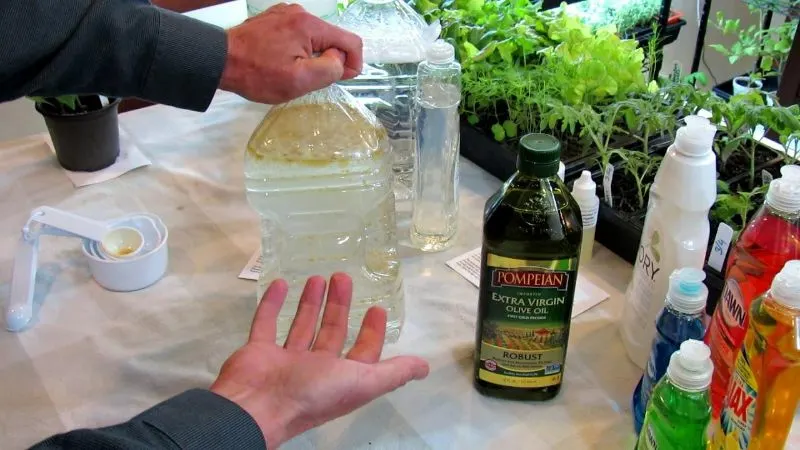
Neem oil is a very effective way to eliminate plant pests, but can it be used on all plants? Most plants can be treated with Neem Oil, but it won’t work as well on plants with rough surfaces or delicate leaves.
Neem Oil won’t work on your plants if they have hair, needles, or anything else that lets pests crawl more profound into the leaves to avoid the oil. Neem Oil shouldn’t be used on plants with fuzzy leaves, like most calatheas and other fuzzy-leaved plants. Here are some examples
- Angel’s Hair Artemisia
- Bear Paw Jade
- Chenille Plant
- Dusty Miller
- Fountain Grass
- Green Goddess
- Hyacinth
See Related: How to Utilized Greenhouse Bees for Pollination
How to Make a Neem Oil Spray and How to Use It
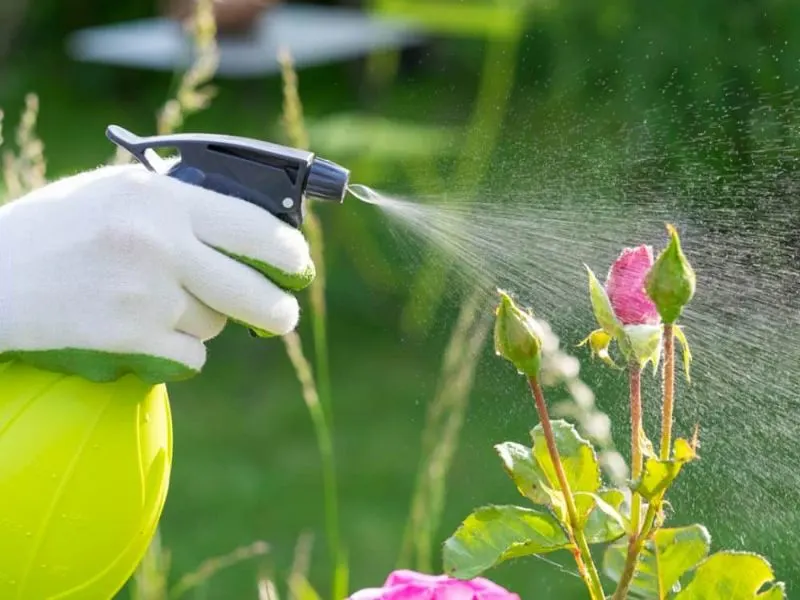
Commercial neem oil spray can often be found at your local hardware store, garden center, or even your favorite big-box store. On the other hand, making your mixture at home is easy and gives you more control over how strong or weak the mix is.
What You Need:
- One to two tablespoons of cold-pressed, raw, pure neem oil.
- A one-gallon spray bottle
- One gallon of warm (not hot!) water
- One to two teaspoons of a mild dish detergent
- A stir stick
- Optional: Protective gloves
- Optional: Peppermint essential oil for added protection and (a better smell!)
Instructions:
1. Combine the Neem Oil and Water in the Bottle
One to two tablespoons of neem oil should be mixed with a gallon of warm water. When you use warm water to make an emulsion, it works better.
2. Put Some Dish Soap in the Bowl
Mix in one or two tablespoons of dish soap. Because oil and water don’t mix well, adding dish soap helps to emulsify the mixture, as well as adding more protection from certain bugs like aphids.
3. Add Essential Oil (Optional)
Six to ten drops of peppermint oil should be mixed in. The smell of peppermint can stop bugs in their tracks. Peppermint-scented dish soap is another great way to reduce the number of ingredients.
4. Mix Everything Well
To mix the contents, give the gallon bottle a few good shakes. The mixture should be a little bit cloudy and look like soap. Spray neem oil well
5. Put the Liquid in a Spray Bottle and Shake It Well
Before spraying, you should shake the bottle well to ensure the mixture is even.
6. Spray a Light Mist on the Plants
It would help if you misted the mixture in the early morning or evening, anywhere from once a day to once a week. Use your hands to rub the mixture into the stems and leaves. It is essential to wear protective gloves, especially if you have sensitive skin. If the infestation is bad, spray the plant several times daily for up to a week.
All other plants can be sprayed once a week.
How Should the Neem Oil Be Put on the Plants?
In this section of the guide, we’ll assume that you already have a solution made of water and neem oil, just like the one we made in the last section. For this step, you could also use a pre-made mix bought from a store. Neem oil can be used on your plants in several ways, such as:
- Mixing water and neem oil in a spray bottle, then mist your plants with the mixture
- Clean your plant by putting some neem oil, water, and soap in a bowl and gently bathing the plant with a paper towel
- Apply neem oil with a Q-tip dipped in a mixture of neem oil and water onto bugs directly
Neem oil is thicker than water because it is an oil, and too much neem oil doesn’t mix very well with water.
Before mixing these two things, ensure the water you are using is warm. Before using the mixture, give the spray bottle an excellent shake to ensure the ingredients are well mixed. Finally, spray neem oil on plants. Let’s go over the pros and cons of these three ways of doing things.
Spraying or Misting Your Plants
The best way to get neem oil onto your plants quickly and effectively is to mist your plants.
If the bugs damaging your plant aren’t widespread, you don’t need to worry about this and can be more selective about how your spray your solution. If the pest is active, you must mist your plant several times to ensure you get rid of everything.
If the bug is very active and spread out, wiping your plant with an oil-doused paper towel might be a better way to eliminate it.
Wiping Your Plants
If you want to go thoroughly and make sure you don’t miss any parts of your plant, you should use a soft paper towel, microfiber cloth, or a cotton ball to wipe your plant down with the neem oil and soap mix.
This can take time – the amount of time it takes to clean your plant thoroughly is directly related to how big it is.
Use Q-Tips to Get Rid of Unwanted Pests
When you have spider mites on a plant, you can get rid of them by dipping a Q-tip in a mixture of neem oil and water and then wiping it on the affected area.
Touching a bug with the Q-tip dipped in the Neem Oil mixture will poison it and prevent others from returning to the area.
Persistence Is Key!
Neem oil takes a while to work, so you must clean and spray your plants several times over a few days. If your plants don’t have any pests right now and you’re using Neem Oil to keep them pest-free, you can spray them once a week to keep them safe from bugs and other problems.
But you should treat your plants more often if pests are already bothering them. If you clean your plants often anyway, now is a great time to spray them with the Neem Oil mixture you made before cleaning them. Your plant will look nice and be safe from pests that might want to live on or near it.
Pros and Cons Of Neem Oil
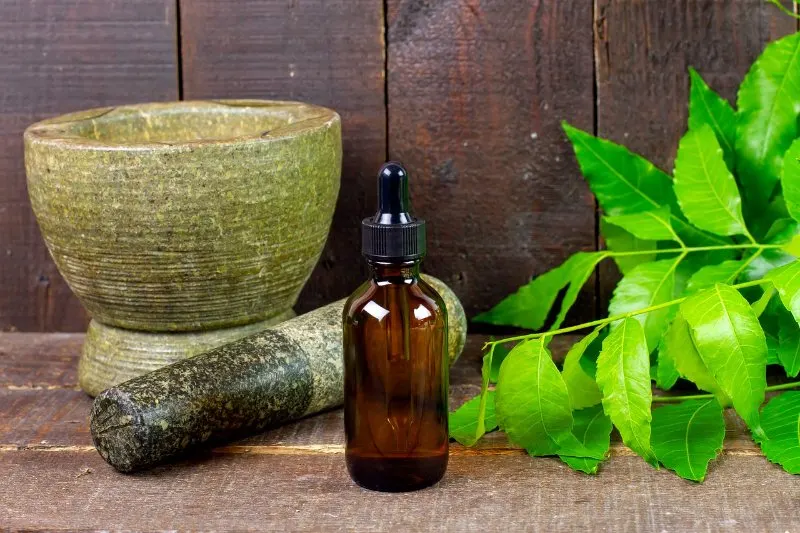
Neem oil is considered one of the safest organic pesticides and fungicides on the market, but it has its critics. This extract comes from Azadirachta indica, a tree that grows in South Asia and is sometimes called “neem tree” or “Indian lilac.” Most of the extract is from the tree’s neem seed oil.
It is one of the best ways to keep melons, cucumbers, and squash from getting powdery mildew, and it also works well as an effective pesticide. It kills and deters many creepy crawlies and works pretty well to eliminate flea beetles.
Neem Oil should not be used when the temperature is over 80 degrees Fahrenheit, and it should never be used during the day unless it’s going to be very cloudy all day. The extra heat generated from the sun “cooking” the oil may cause harm to your plants.
This means the best results should be done after the sun goes down. If you let the oil dry overnight after putting it on your plants, the sun won’t cause the oil to burn your plants.
Also, you shouldn’t use neem oil on plants that show signs of being under too much stress (either due to disease, drought, etc.).
Final Thoughts
Neem oil is the best natural way to prevent pests without using chemicals. It can be used as a great preventative measure on almost all indoor plants, outdoor plants, and edible crops if mixed with warm water and dish soap to make a spray and then sprayed on the plants.
Spraying plants with this mixture regularly, anywhere from once a day to once a week, can be a simple way to keep insects away and even get rid of ones already there. With the help of this strong oil, your plants will stay healthy and grow if you spray them with a small amount and keep them out of direct sunlight.
FAQs
What plants should you not use neem oil on?
Neem oil is a natural pesticide derived from the seeds of the neem tree. It is effective against a wide range of pests and is commonly used in organic gardening. However, neem oil should not be used on plants that are intended for consumption, as neem oil is toxic when ingested.
Additionally, neem oil can be harmful to some plants, such as ferns and some species of orchids, and can cause damage to their leaves and roots.
Can you spray neem oil on basil?
Neem oil is a natural pesticide commonly used in organic gardening. It is safe to use on most herbs, including basil. When using neem oil on basil, it is important to dilute it properly and apply it in the early morning or late evening to avoid burning the leaves in direct sunlight.
Can you eat basil after spraying with neem oil?
Is it safe to eat basil after spraying with neem oil? Neem oil is a natural pesticide that is commonly used in organic gardening to control pests and diseases. While neem oil is generally considered safe for use on edible plants, it is recommended that you wait at least 7 days after spraying before harvesting and consuming any treated herbs or vegetables.
This waiting period allows the neem oil to break down and dissipate, ensuring that no harmful residue remains on the plant.
When should you not use neem oil?
Neem oil is a natural pesticide and insect repellent that can be used on plants, pets, and even humans. However, there are certain situations where neem oil should not be used. One such situation is during pregnancy, as neem oil has been shown to cause miscarriages in some animal studies. Additionally, neem oil should not be used on young children or infants, as it may cause skin irritation or allergic reactions.
Related Resources:

